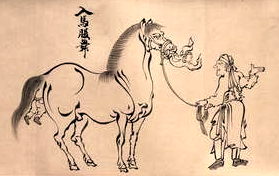The dawn of the week
This is a follow-up to my Néojaponisme post (and related No-sword post) about the introduction of the Western calendar to Japan. The question: What about days of the week? The answer: Obtained from Meiji kaireki: "Toki" no bunmei kaika 明治改暦 「時」の文明開化 ("The Meiji calendar modernization: The bunmei kaika-tion of 'time'"), a book published in 1994 by Okada Yoshirō 岡田芳朗.
Let me start with Okada's conclusion, from page 274:
週休制は官庁・学校・軍隊など公的機関に始まり、大企業や貿易関係会社を中心に、都市部で普及したが、中小企業や特に地方では太平洋戦争後になってからやっと普及しはじめ、ことに昭和三十年代の経済大発展期を経てようやく全国的に行なわれるようになった。[...] 週休制の採用は勤労と有給休暇日という、経済的側面が強く、社会全体の構造の変化が必要であった。
The weekly-rest system [i.e. the system where rest days were determined by day of the week rather than "days with a date ending in 1 or 6," as was typical up until this point] began in government, schools, the army, and other public institutions, then spread to metropolitan areas, particularly in large corporations and companies involved in foreign trade. However, it was not until after World War II that it finally began to spread to small and medium-sized companies and especially rural areas. The economic miracle of the late 1950s and early 1960s was when the system finally became standard nationwide. [...] The adoption of the weekly-rest system had a strong economic effect with respect to labor and paid holidays, and required a change in the overall structure of society.
It seems that the first people in Japan to adopt "the week" (as something other than a divinatory tool) did so because they had no choice: they were dealing with European or American traders in Yokohama, or they were working alongside "hired foreigners" in government, education, or the military. It made no sense for them to turn up to work when your trading partners or co-workers were taking the day off, or vice versa.
Okada doesn't mention why the Meiji government didn't just write "must work on Sundays" into their contracts for hired help, but the religious component was probably a factor. Back then more Christians took the Sabbath seriously. In any case, if all of your external consultants say "a seven-day week with 1.5 days off is the only way to run a government/army/school," eventually you're going to start to believe it.
Anyway, this led to a situation where "the government and the people have different days off" (官民其休日を同じふせず), which in turn caused mutual indolence when they saw each other slacking off on work days (相見て互いに惰心を生ず).
The above quotations, by the way, are from the Tokyo Nichinichi Shinbun in the tenth month of Meiji 5, before the calendar had even gone solar. So the week-system issue was to a great extent independent of the solar-calendar issue.
Anyway, in Meiji 7 the government declared Saturday afternoon and Sunday the official holidays in all schools and, a few months later, public offices. (Kanagawa prefecture had already done this locally — they had that port full of foreigners to deal with, after all.) After that, it began to percolate down through the rest of society, finally saturating Japan after WWII as noted above. The end.
![[No-sword]](http://no-sword.jp/images/site/no-sword_banner.jpg)



